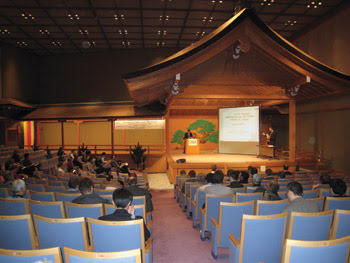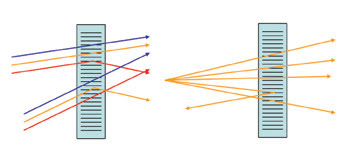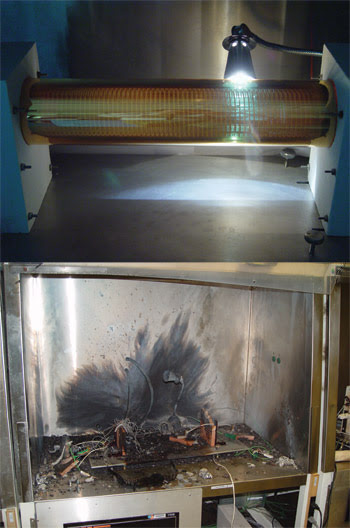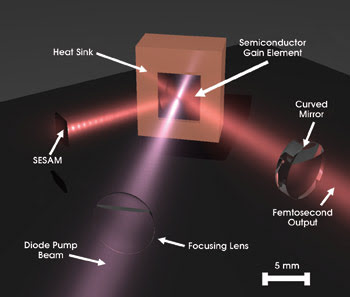At the 2008 Advanced Solid-State Photonics conference, experts report on the latest technology developments.
Breck Hitz, Senior Technical Editor
Advanced Solid-State Photonics (ASSP) 2008 was held Jan. 27 to 30 in the Noh Theatre of the Nara Prefectural New Public Hall in Japan. It was the first time the conference had been held in Japan, and it produced a host of intriguing papers on topics ranging from the manufacturing of automobiles to ultrafast amplifiers. What follows is a description of a subset of those papers, to give the reader a flavor of the happenings at this year’s conference.
In a plenary paper, Kazuhisa Mikame, a project manager in the Production Engineering Development Div. of Toyota Motor Corp. of Toyota City, Japan, described how laser welding has been integrated throughout the company’s manufacturing process. Altogether, the company uses more than 300 lasers in building its automobiles, he said.
Conventionally, the company has used resistance spot welding and spot arc welding for its body shells, Mikame explained. However, the necessity of reducing automobile weight, driven by concerns about fuel efficiency and CO2 emissions, has led the company to replace these techniques with continuous — rather than spot — laser welding. Continuous welds produce more rigid panels than spot welding, and this in turn enables the use of thinner, lighter materials.

Figure 1. The Noh theater in the Nara Prefectural New Public Hall in Japan hosted the 2008 Advanced Solid-State Photonics meeting. This photo was taken the Monday evening shortly before the postdeadline session began.
The versatility of laser welding combined with fiber optic delivery also makes it possible to place welds in previously inaccessible locations. As one example, Mikame cited an assembly process in which a part was translated directly onto the body shell and welded with conventional techniques. In a redesigned process, the part is rotated into place through the opening for the rear window and laser welded into place, producing greater rigidity and lower total mass.
The cost per weld often is more expensive with the laser, he said, but the material cost is reduced, and the end result is superior. At the end of the day, lasers save energy, reduce emissions and make a significant improvement in Toyota’s bottom line.
A grand challenge
Robert L. Byer of Stanford University in California challenged the conference attendees to “think harder about the job to be done” with solid-state lasers. True, he acknowledged, there have been great strides in solid-state lasers in recent years: dramatic increases in fiber laser power, the advent of disc and ceramic lasers, and the availability of unprecedented power from diode lasers. However, solid-state lasers have even greater potential. They will be instrumental in the detection of gravitational waves and in the development of laser accelerators for physics experiments at the tera-electron-volt (TeV) scale. They also have the potential to be the technology that builds attosecond coherent x-ray sources.
The field of high-energy physics has run into a roadblock, Byer said. TeV accelerators, at perhaps US $20 billion, cost more than the world can afford. There must be a less expensive way to access those energies, and a laser accelerator may provide the solution. Work at Stanford and elsewhere has progressed steadily since the first conceptual demonstration in 1994, but many challenges remain. Neither Byer nor any of today’s experts know what form the solutions to these challenges will take, but he did offer one insight: Ceramic lasers almost certainly will be involved.
Volume Bragg gratings
Volume Bragg gratings are three-dimensional diffraction gratings that can be very versatile in controlling the operating parameters of conventional lasers. They can be designed either to reflect or to transmit a selected wavelength propagating in a selected direction (Figure 2). In an invited paper, Leonid Glebov of the University of Central Florida’s College of Optics and Photonics in Orlando, reviewed the principles of volume Bragg gratings in photothermal refractive glass, explaining that their angular selectivity can be as tight as 0.1 mrad or as loose as several milliradians. Likewise, they can be designed with spectral selectivity well into the subnanometer region. Glebov described numerous successful applications of volume Bragg gratings, ranging from spectral narrowing and mode selection in lasers to pulse compression and stretching to spectral beam combining.

Figure 2. A volume Bragg grating can be designed to transmit (left) or reflect (right) a selected wavelength, which propagates in a selected direction.
In one of the first indications of commercial interest in alkali-vapor lasers, Alan B. Petersen of Newport Corp.’s Spectra-Physics Div. in Mountain View, Calif., reported adding a volume Bragg grating to a diode laser bar, tailoring its emission to match the absorption spectrum of atomic rubidium vapor.
Without the grating, the 19-emitter, 1-cm bar produced nearly 60 W of 780-nm radiation with a 2-nm bandwidth. The absorption bandwidth in the vapor cell of a rubidium laser is about 0.03 nm and, by adding the grating to the diode bar, Petersen reduced its bandwidth to 0.1 nm while reducing the output power only slightly, to about 50 W. He temperature-tuned the output wavelength across 0.4 nm by holding the diode temperature constant while adjusting the grating temperature.
Although his chief motivation for this work was to develop a rubidium laser pump, he explained that volume Bragg gratings combined with diode bars would make suitable pumps for a variety of other systems, including many narrow-absorption solid-state lasers.
New and newish materials
Sony Corp. is building a 10 × 50-m laser display to demonstrate the potential of a one-dimensional microelectromechanical system (MEMS) light modulator. The display ultimately will require “kilowatts” of laser power, according to a company spokesman; however, at ASSP, Takahiro Mochizuki of Sony, Tokyo, described the company’s efforts to date to build the requisite green laser. The company’s approach uses an internal frequency-doubled Nd:YVO4 laser whose nonlinear crystal is periodically poled stoichiometric lithium tantalate (PPSLT).
The “stoichiometric” label indicates that the material is stoichiometrically correct, with an equal number of lithium ions and tantalate radicals. Conventional, or “congruent,” material lacks this balance, result-ing in point defects throughout the crystal. The defects reduce the material’s electrical conductivity and make it more susceptible to optical damage from index inhomogeneity, which is caused by displaced electrons — electrons that can’t find their way home in the absence of material conductivity.
The Sony laser generated 20 W of green power in two beams emerging from a folded, Z-shaped resonator. The PPSLT crystal was in the diagonal part of the Z, and each horizontal part contained its own diode-pumped Nd:YVO4 crystal. To be compatible with the one-dimensional MEMS modulator, the beam was oval in shape, having a Gaussian profile in the narrow dimension and a top-hat profile in the long direction.
Has KDP been dethroned?
For applications requiring joule-level second-harmonic generation, a new material — yttrium calcium oxyborate (YCOB) — may produce better results than the venerable potassium dideuterium (KD*P); that was the “take home” message that Christopher A. Ebbers of the Lawrence Livermore National Laboratory in Livermore, Calif., had for the ASSP audience. Although Ebbers is developing the material for use with the Mercury laser — and has used YCOB to generate as much as 317 W of green power at 10 Hz — he thinks the nonlinear crystal may have wider commercial application.
The Mercury laser is a diode-pumped solid-state laser that Lawrence Livermore is building to drive inertial-confinement fusion. Other such fusion systems, being built at Livermore and elsewhere around the globe, rely on flashlamps to pump their neodymium-doped glass lasers, but if inertial confinement fusion is ever to become an economically practical power source, diode pumping will be absolutely essential. (Watch for a feature article describing the Mercury laser in a future issue of Photonics Spectra.)
YCOB has several significant advantages over KDP and KD*P, the crystals that have been used for high-peak-power green generation for decades. Compared with the non-deuterated version of the crystal (KDP), YCOB has twice the thermal conductivity, three times the nonlinear coupling and 10 times the fracture strength. It also is relatively simple to polish and, unlike KDP and KD*P, it accepts standard antireflection coatings.
A useful technique for generating mid-infrared (2 to 12 μm) radiation is to convert the output of a 1-μm neodymium or ytterbium laser, or a 1.5-μm erbium laser, with an optical parametric oscillator (OPO). Whereas several nonlinear crystals — for example LiNbO3 or potassium titanyl phosphate (KTP) — work well for outputs below ~4 μm, their output diminishes rapidly at longer wavelengths. Other nonlinear crystals have problems with optical damage, scattering losses, thermal lensing and/or two-photon absorption when used in an OPO generating output beyond 4 μm.
At the conference, Peter G. Schunemann of BAE Systems Inc. in Nashua, N.H., reported what he believes was the first growth of large, high-optical-quality CdSiP2 crystals.
After several false starts (Figure 3), he and his colleagues grew single crystals as large as 19 mm in diameter and several centimeters long. The material had extremely low loss between 2.5 and 5 μm, and its thermal conductivity was an order of magnitude better than that of other nonlinear crystals such as AgGaS2.

Figure 3. “Crystal growing isn’t necessarily for the faint-hearted,” Peter Schunemann told the audience. In this case, he was growing CdSiP2 by directional solidification in a high-temperature, transparent furnace (top). A slight misstep ended disastrously (bottom). His laboratory subsequently has been freshly repainted, Schunemann noted.
Schunemann’s colleagues at the Air Force Research Laboratory at Wright-Patterson Air Force Base in Ohio measured the crystal’s birefringence, then invoked the Sellmeier equations to find the phase-matching angles for OPOs pumped at 1.064, 1.550 and 2.055 μm. For 1.06-μm pumping, phase-matching is possible only above 6 μm, although the crystal is lossy at those longer wavelengths. For 1.550- and 2.055-μm pumping, however, phase-matching is possible across the whole 2- to 10-μm range, leading Schunemann and his colleagues to conclude that CdSiP2 may indeed be a useful crystal for generating mid-infrared outputs.
Thin-disc lasers
“The shortest pulses directly obtained from a semiconductor laser” — i.e., without external pulse compression — is how Uwe Griebner described the results of work at the Max Born Institute for Nonlinear Optics and Short-Pulse Spectroscopy, and at the Ferdinand Braun Institute, both in Berlin. He and his colleagues employed a V-shaped, nearly hemispheric, three-mirror resonator in an optically pumped semiconductor disc laser, which they mode-locked with a semiconductor saturable absorber mirror (SESAM) (Figure 4).
What was unusual about this laser was that, rather than the conventional semiconductor gain medium consisting of alternating step-index quantum wells and spacers, it used a gain medium with quantum wells whose walls were sloped — a graded-index gain medium.
In a conventional gain medium, pump photons typically are absorbed in the spacer regions, creating free carriers that wander around randomly until they fall into a quantum well. In Griebner’s laser, however, the sloping walls between the wells and the spacers herded the carriers quickly into the wells, giving them less time to wander about before finding a well to fall into. The result was less rollover at the higher pumping levels because the spacer regions tended not to become saturated with free carriers.
Mode-locking resulted from the interplay of three effects: the saturation of the SESAM’s absorption, the AC Stark effect in the SESAM, and the balancing of dispersion and self-phase modulation, leading to soliton pulse shaping. The resulting modelocked pulses were nearly transform-limited, with a duration of 290 ps. The shortest pulses the investigators observed in a similar laser with a conventional step-index gain medium were 590 ps. What is not clear, however, is exactly how the graded-index gain medium led to shorter pulses. The researchers plan to examine this question in future experiments.

Figure 4. Mode-locked, optically pumped semiconductor disc lasers typically are arranged in a folded-cavity configuration, with the gain medium serving as the folding mirror and a SESAM serving as one of the end mirrors.
Optically pumped semiconductor lasers with intracavity components traditionally have used a folded-cavity architecture (Figure 4). But this design has several inherent drawbacks, including a lack of mechanical robustness and a minimum cavity length that places an upper limit on the fundamental mode-locking frequency.
At the 2005 ASSP meeting, researchers at ETH Zurich in Switzerland described their efforts to integrate the laser gain medium and the saturable absorber into a simple linear cavity; this year, Aude-Reine Bellancourt reported their success at the endeavor. (They published the original report of this success in a journal last year, but they have significantly increased the output power by addressing several design issues.)
Responding to the insatiable demand for new acronyms in laser technology, they have christened the device a MIXSEL: mode-locked integrated external-cavity surface-emitting laser.
The basic problem in integrating these two functions — gain and modulation — into a monolithic semiconductor is that a greater optical intensity is required in the saturable absorber than in the gain medium. That is because the saturable absorber must saturate faster and recover sooner than the gain medium does. When the gain medium and the SESAM are at different places in a folded cavity, this requirement can be met with suitable resonator design. But when the two are only millimeters apart in an integrated device, another approach is required.
The approach at ETH is to base the saturable absorber on quantum dots rather than on traditional quantum wells. Quantum dots provide three-dimensional confinement of electrons, compared with one-dimensional confinement in wells (see “The Fuss about Quantum Dots,” Photonics Spectra, January 2008, p. 80). This gave the ETH researchers two independent knobs for adjusting the modulation for optimal mode-locking. The basic SESAM design allowed them to vary field strength in the absorber section and to reduce saturation fluence, and the quantum dot density allowed them to control the modulation depth. As a result, their laser generated 195 mW in a 2.92-GHz pulse train of 32-ps pulses whose beam quality (M2) was less than 1.1.
Terahertz from 1-μm photons
Several nonlinear optical techniques for generating terahertz radiation were presented at the conference. Hiromasa Ito of Riken Sendai in Japan described generating terahertz radiation directly from an optical parametric oscillator pumped at 1.06 μm. (The word “optical” may be inappropriate for a device that generates radiation at terahertz frequencies. The speaker referred to it as a “terahertz-wave parametric oscillator.”)
Ito and his colleagues placed MgO:LiNbO3 crystal in a three-mirror ring resonator that could be adjusted to change the phase-matching angle in the nonlinear crystal. The terahertz radiation was coupled out the side of the crystal with an array of silicon prisms.
Ito also described generating terahertz radiation by difference-frequency generation. He pumped an OPO containing two KTP crystals with 532-nm light from a Nd:YAG laser. The phase-matching angle of each KTP crystal was independently adjustable, so the OPO produced two idler outputs, each tunable between 1.3 and 1.6 μm.
These two wavelengths were incident on a crystal of (4-dimethylamino-N-methyl-4-stilbazolium tosylate), where they generated tera-hertz radiation at their difference frequency. Because each of the KTP crystals could be rotated to a new phase-matching angle within a millisecond, the terahertz radiation was truly agile and could be tuned across a 40-THz spectral range.
Using an alternative approach to difference-frequency generation, Konstantin L. Vodopyanov and his colleagues at Stanford, at Microtech Instruments Inc. in Eugene, Ore., and at Hanscom Air Force Research Laboratory in Bedford, Mass., generated a milliwatt of terahertz radiation. They also generated two infrared frequencies in an OPO — in this case, one pumped with picosecond pulses of 1.06-μm light and containing a periodically poled LiNbO3 crystal — but they operated it at near degeneracy, mixing the signal and idler to generate terahertz radiation.
To take advantage of the high circulating power inside the OPO, they placed their terahertz-generating nonlinear crystal — a piece of periodically poled GaAs — inside the doubly resonant OPO cavity, where the power was as high as 30 W. By improving the quality of the GaAs crystal to reduce its infrared loss, the authors believe that their device should be scalable to terahertz powers approaching 100 mW, without increasing the 1.06-μm pump power beyond the ~9-W level of their initial experiment.
A smaller green laser package
For its photo printers and laser displays, the Ricoh Co. Ltd. needs a ~10-W green laser that fits into a 100-cm3 package. The company’s Tsuyoshi Suzudo described a laser that came very close to that ideal: a frequency-doubled vanadate laser that produces 9.6 W from a 150-cm3 package. Suzudo’s colleagues included engineers from the Institute for Molecular Science in Okazaki and from the Oxide Corp. in Yamanashi, both in Japan; Suzudo is with the Ricoh R&D Center in Natori, Japan.
The 4-cm-long vertical resonator contained a half-millimeter-thick neodymium-doped vanadate crystal and a lithium triborate (LBO) nonlinear crystal. A dichroic mirror on the top of the vanadate crystal reflected the green light for a second pass through the LBO, and a 1.06-μm coating on the bottom served as one resonator mirror. The other mirror was coated onto the far end of the LBO crystal. The vanadate crystal was soldered to a microchannel cooler for heat removal.
Suzudo explained that the Ricoh engineers edge-pumped the composite vanadate crystal from two sides with up to 37 W of 808-nm light from each of two diode laser bars.
This report has described only a fraction of the papers presented at ASSP. One entire session of the conference was dedicated to progress in ceramic lasers, and others focused on ultrafast oscillators and amplifiers. There were papers about new nonlinear materials and new laser-gain materials that are not included here. Another session was devoted to recent advances in fiber lasers, and there were nearly 100 posters in addition to the oral presentations.
Breaking with tradition, the conference organizers did not announce the location of next year’s conference, but it will almost certainly return to the US in 2009, possibly to the West Coast.